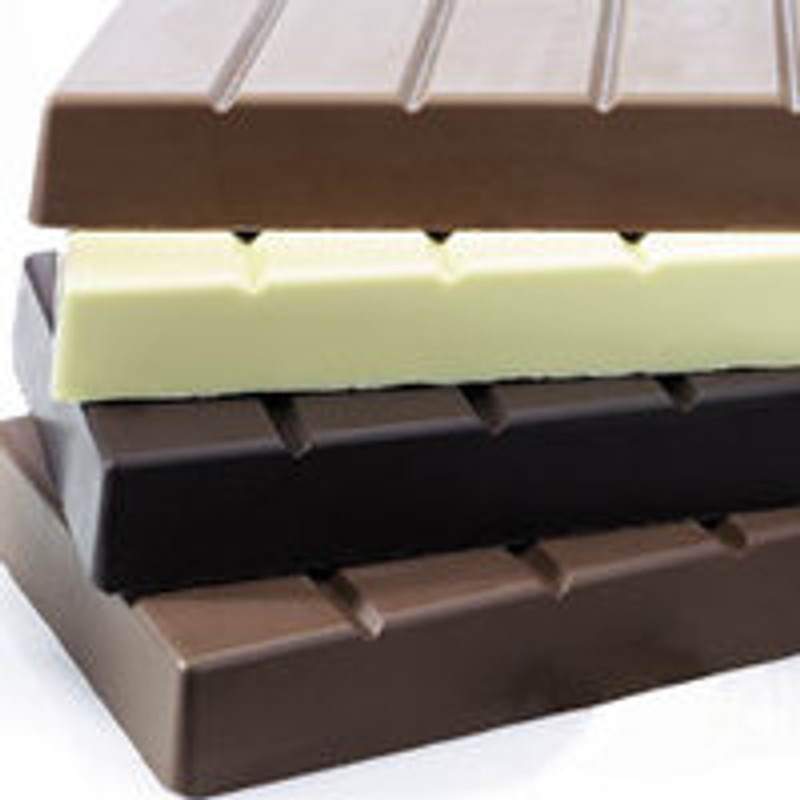Sourcing Natural Chocolate and Raw Cacao: What Matters in Chocolate Supply
Great chocolate starts with great sources. Whatever comes after depends on where the cocoa bean comes from and how it is grown, picked, and handled. From flavor and texture to how chocolate performs in the kitchen, ingredient quality begins at the source. For chocolate makers committed to consistency and ethical sourcing, every decision matters.
At Santa Barbara Chocolate, we want our chocolate products to show that we care about quality and honesty. Our focus is on sourcing from trusted producers who share the same values: sustainability, fairness, and exceptional craftsmanship.
Why Chocolate Sourcing Matters?
Cacao is an agricultural product, and like wine or coffee, its flavor is shaped by soil, weather and growing conditions. Regional variations influence the final taste, from nutty and earthy to fruity or floral. From the start, working with farms and communities that know these things makes the chocolate better.
Choosing the right supply partners allows us to work with beans that meet high standards. Sourcing involves relationships and traceability in addition to the purchase of raw materials. When farmers are paid fairly and supported long term, the quality of their work reflects it. This method helps keep a steady supply of tasty, reliable cacao.
Sustainable Sourcing and Fair Trade Partnerships
Whenever possible, we seek to partner with Fair Trade, and bio-farmed operations. These producers focus on regenerative farming methods and community-driven models that are beneficial beyond the farm.
Fair Trade cocoa means producers receive a fair price, work in safe conditions, and often benefit from programs that support local development, education, and environmental efforts. A lot of the time, these cooperatives put their money back into better farming methods which can make the beans reliably better.
Sustainable farming practices further protect the cacao-growing regions. Avoiding harmful chemicals, protecting native plant species, and maintaining soil health are all central to the long-term success of both farmers and chocolate makers.
Raw and Natural Cacao: Understanding the Difference
The term “raw cacao” often refers to cacao that has been minimally processed and not exposed to high heat during fermentation or roasting. Different sources may have different meanings but in general, raw cacao keeps more of its natural antioxidant content. Some people buy this kind of chocolate because they think it is good for them, while others like the strong, earthy taste.
“Natural chocolate” typically refers to chocolate made without artificial additives, using simple, recognizable ingredients. Our goal is to supply products that are as close to the original bean as possible while still offering dependable texture, melt, and workability for culinary use.
That's why it's important to get grade AA cocoa. These beans are sorted to make sure they are all the same, have few flaws and have a high fat content. These are important qualities for chocolate makers who want smooth finishes, regular batch behavior, and a rich flavor.
The Supply Chain from Farm to Chocolate
Sourcing cacao isn’t just about finding beans. It’s also about managing what happens after harvest. Once the cacao pods are cracked and the beans removed, fermentation and drying begin immediately. These steps, carried out locally on or near the farms, begin to shape the chocolate’s eventual profile.
After that, we work with trusted partners to transport the fermented and dried beans to specialized grinding and mixing facilities. We often work with processors in Europe who handle small-batch grinding using equipment calibrated for artisan production. These facilities apply strict food safety and quality standards that match our own, helping us create chocolate that performs well in both commercial kitchens and artisanal applications.
Although this multi-step process adds to production costs, the results are worth it. A chocolate that is clean, dependable, and flavorful makes the entire production process from tempering to molding - more consistent. It also allows chefs and makers to create products they’re proud to share.
Why Ingredient Integrity Shapes Final Quality?
Every step in the supply chain from the selection of beans to the way chocolate is processed—affects the final outcome. Chocolate with good structure, a smooth mouthfeel, and a deep aroma doesn’t happen by accident. It starts with thoughtful sourcing and continues with attention to every detail.
Whether it’s a high-fat cocoa mass or a semi-finished chocolate liquor, we make sure the ingredients we offer meet strict standards. A lot of our chocolate comes from beans that are grown just a few steps away. This cuts down on the supply chain and keeps our connections with farming communities stronger.
By prioritizing origin and integrity, we’re better able to deliver chocolate with a smooth finish, strong cocoa flavor, and stable tempering performance.
Quality chocolate doesn’t begin in the factory. It begins in the field through good farming, respectful sourcing, and careful selection. When those pieces align, the results are unmistakable: reliable flavor, strong performance, and a product that reflects the hard work of every person involved from farm to finished bar. That’s the kind of chocolate worth making and sharing.



